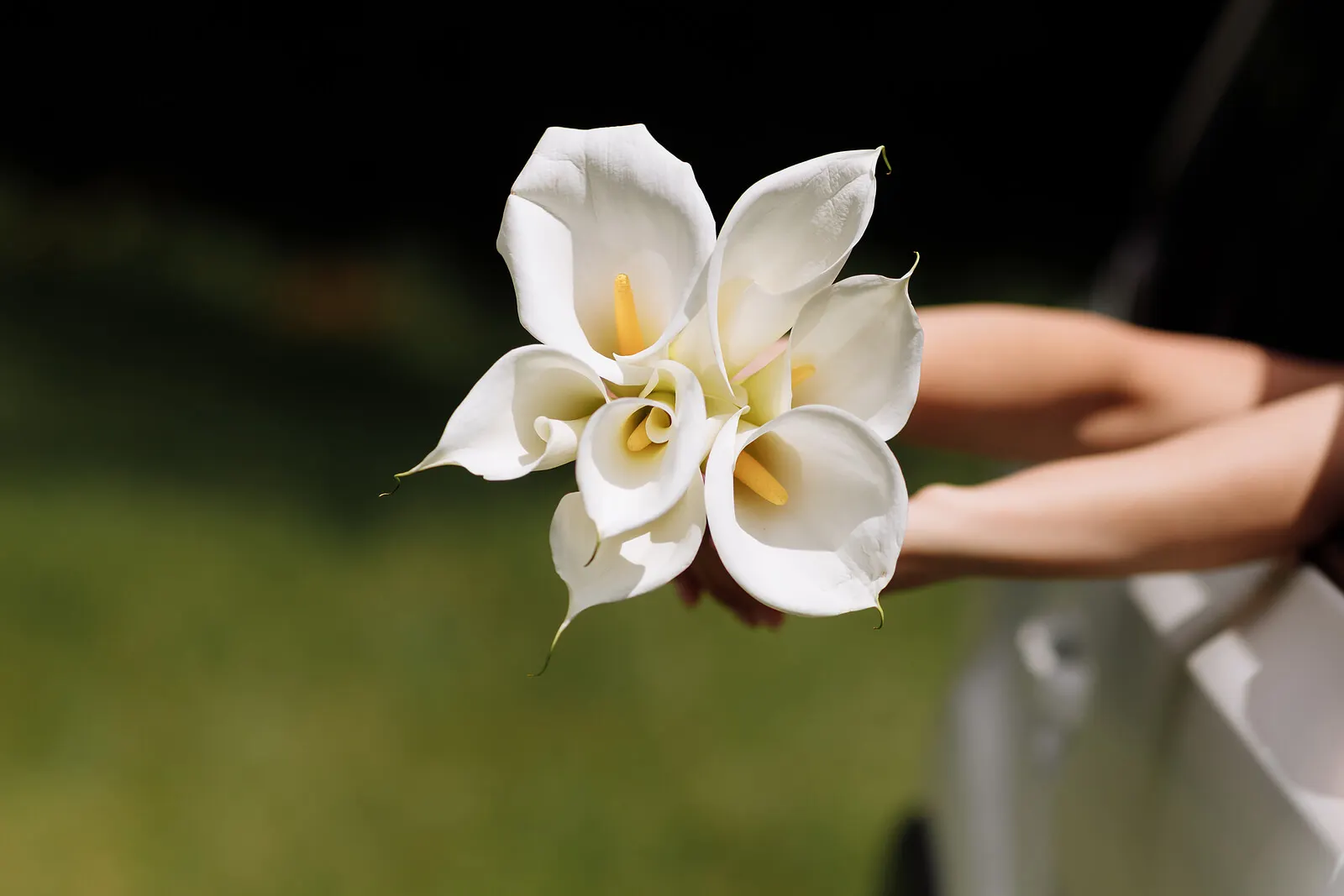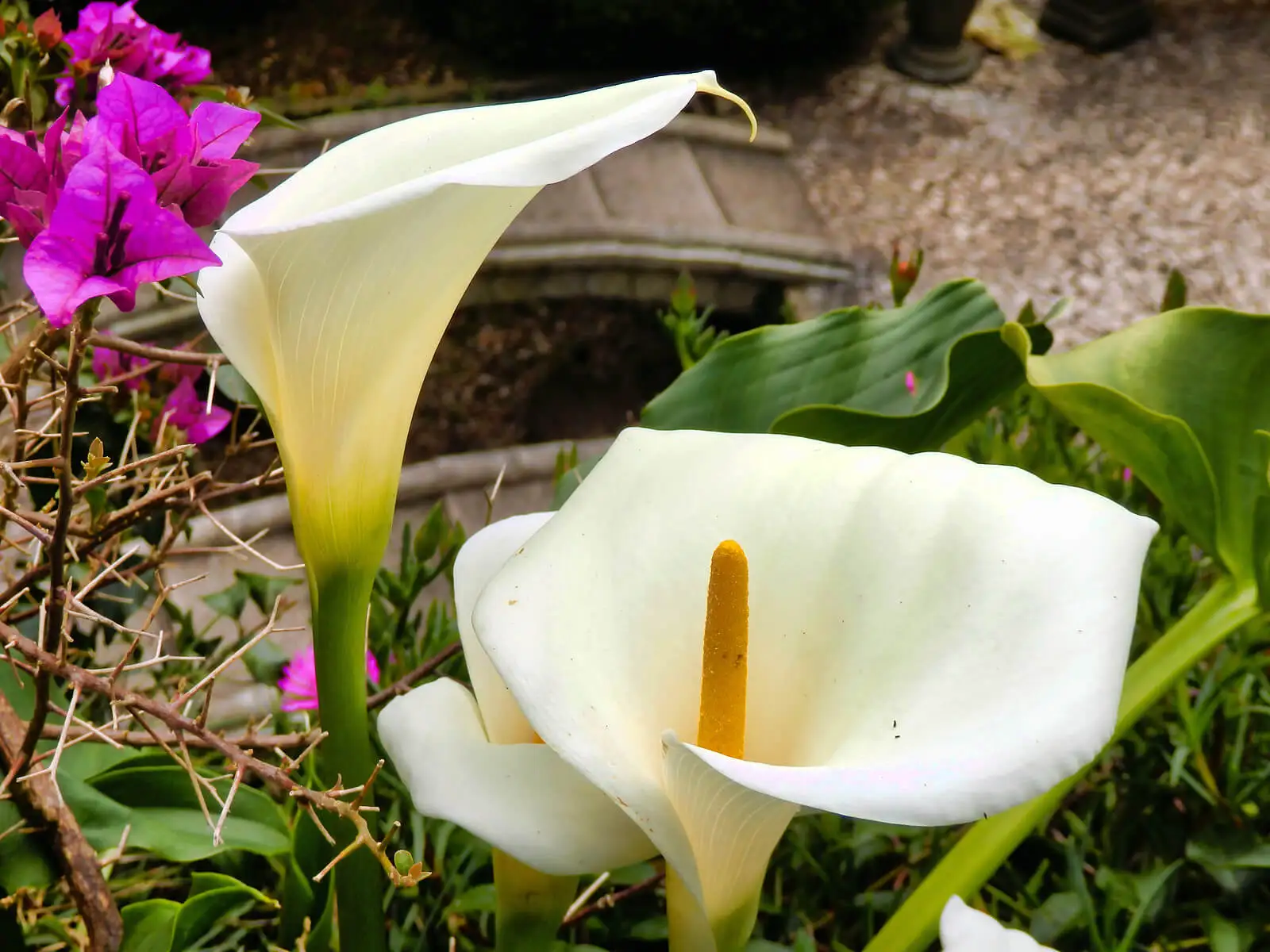Calla Lilies: How to Look After Them

Zantedeschia aethiopica, better known as calla lilies, or arum lilies, is a species native to southern Africa, with a unique aesthetic. Its inflorescences – called spadix – and its characteristic large cup-shaped flowers make it a plant widely used as an ornamental.
It’s a plant that prefers temperate climates, although it has great versatility in withstanding different temperatures. However, in places where frost occurs, it’s best to keep it indoors. What other attention does it require? Find out here.
Characteristics and origin of calla lilies
Calla lilies have numerous nicknames, however, their scientific name is Zantedeschia aethiopica; they’re a herbaceous perennial of the Araceae family. They’re characterized by their large spathes, which form a kind of white cup.
This is what has converted it into an ornamental plant, so it’s common in the discipline of floriculture. Its flowering occurs in spring, but it’s necessary to follow certain recommendations for its specific care, such as keeping it away from frost, and providing shade and abundant water.
It’s a species native to South Africa, where it grows naturally in places with plenty of water. But it’s also grown in many parts of the world with temperate or tropical climates. The calla is popular in Australia, America and Europe. In Ethiopia, it’s the national flower.

What do calla lilies symbolize?
It’s a highly symbolic species. One of its nicknames – “cradle of Moses” – even links it to the Biblical story concerning this prophet. It’s believed that the banks of the Nile River, where Moses was placed to protect him from Egyptian persecution, were adorned with this plant. Therefore, it could have functioned as a “cradle” for the child who became the liberator of the Hebrew people.
As for its daily use, the calla is associated with purity, good luck, and a strong spirituality. For this reason, it tends to be given as a gift at births and communions of children. Paradoxically, it’s also very present in cemeteries, as it’s often given as an offering to the deceased.
Keep reading: The Happiness Plant: Characteristics and Care
Specific care of calla lilies
Encouraging the optimal development of calla lilies allows you to enjoy the flowering season. Its characteristic white flowers last about three months and can appear several times a year.
With the following care, it can grow to a height of 10 centimeters (4 inches) to half a meter (1.6 feet), depending on the specimen and the size of the pot. It’s suitable for both indoors and outdoors.
Light
One of the most important aspects of calla care is that it doesn’t tolerate direct sunlight – especially if this is intense and sustained. Therefore, it’s recommended to place it in a lighted area, but without direct sun rays. For example, near a window or, if placed outdoors, under the shade of a tree.
Watering
It needs plenty of water, although this depends on the time of year. As flowering approaches in spring, it’s recommended to increase watering, even to twice daily spraying.
As autumn and the cold months approach, the frequency of watering should be progressively reduced. On the other hand, it’s important to keep the substrate moist, as it doesn’t tolerate dry conditions.
Fertilizer
It’s advisable to provide fertilizer, but only a couple of times a year. This is necessary during the growing months, that is, in the late summer and early spring weeks. A good option is the application of organic fertilizer.
Reproduction of calla lilies
Growing this plant is very simple and there are several ways to do it – by means of offshoots, bulbs, or seedlings.
- Seedlings. One of the most common ways is to cut off a young shoot with a bit of root from the original plant. Then, grow it in another pot maintaining constant humidity.
- Bulbs. Bulbs can be obtained in any specialized store. They should be inserted into the pot with substrate and watered until they are filled with water. After a few days, the stems will begin to grow.
- Seeds. Calla seeds are obtained after the flowering stage has passed. When the flowers fade, it’s possible to harvest them.
Temperature and humidity
The other key aspect of calla lily care is the humidity level. It needs constant humidification, both in summer and winter. To achieve this, you should spray the leaves every day or apply a humidifier that improves the ambient conditions.
This can be effective, especially in winter. In the cold season, despite the low temperatures, it needs to remain humid when the use of heating tends to dry the room.
In addition, if the weather outside is very cold, below 10 degrees, it’s advisable to move it indoors. The calla lily is a warm weather plant; its ideal temperature ranges from 18 to 25 degrees Centigrade (64 to 77 Fahrenheit); it can withstand higher levels but not much lower.

Pests and diseases
The main pests affecting calla lilies are snails and slugs, which take up residence in their large, thick leaves. It’s best to prevent their appearance, but they can be treated with homemade solutions or pesticides.
On the other hand, if the leaves begin to take on a yellowish hue, the plant most likely needs more water. If it’s in a very cold environment, it should be moved to a warmer place.
Discover more: Check Out These 10 Garden Plants that Bloom in Autumn
Beware of the toxicity of water lilies
Unlike other plants for gastronomic use, the calla lily has the characteristic of being toxic for human consumption. Therefore, it shouldn’t be consumed raw or cooked, as it can cause gastroenteritis. In addition, contact with the sap, which can irritate the skin and lips, should be avoided.
All cited sources were thoroughly reviewed by our team to ensure their quality, reliability, currency, and validity. The bibliography of this article was considered reliable and of academic or scientific accuracy.
- Beltrán-Dávalos A. A, Rosero-Erazo C, Cargua-Catagña F, , Echeverría M. Potencial de Zantedeschia aethiopica L. para la rehabilitación de suelos contaminados con cromo hexavalente en zonas alto andinas de Ecuador. Acta Agronómica [Internet]. 2019;68(2):92-98. Recuperado de: https://www.redalyc.org/articulo.oa?id=169960781003
- Y.Singh, A.E.van Wyk, H.Baijnath. Floral biology of Zantedeschia aethiopica (L.) Spreng. (Araceae). South African Journal of Botany. Volume 62, Issue 3, June 1996, Pages 146-150. Disponible en: https://www.sciencedirect.com/science/article/pii/S0254629915306141?via%3Dihub
This text is provided for informational purposes only and does not replace consultation with a professional. If in doubt, consult your specialist.








